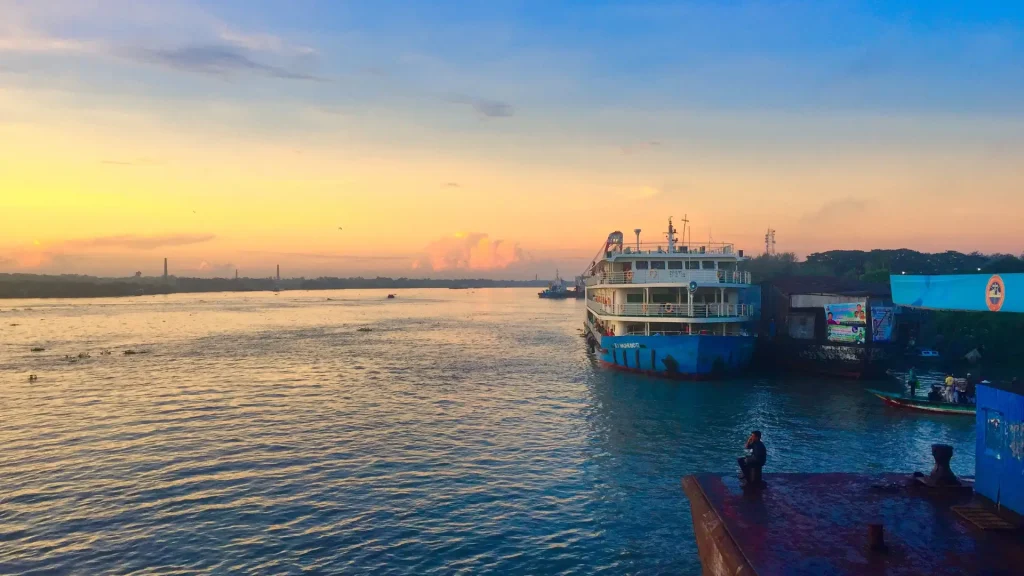
Kirtonkhola River at dawn with crimson hues in Barishal, Bangladesh, reflecting the city’s riverine life and tranquility. Photo by: Hasan Iqbal
At the southern tip of Bangladesh, nature has painted a one-of-a-kind watercolor. In the flowing waters of the Kirtonkhola River, where life pulses with every ripple, lies the city of Barishal—often hailed as the “Venice of the East.” But Barishal is more than a city; it is the heartbeat of Bangladesh’s riverine civilization. Every morning, silent boats cut through the mist, carrying the subtle aroma of fresh hilsa fish, while the people, the culture, and the rhythm of life flow like the river itself, weaving centuries-old tales that define the soul of the region.
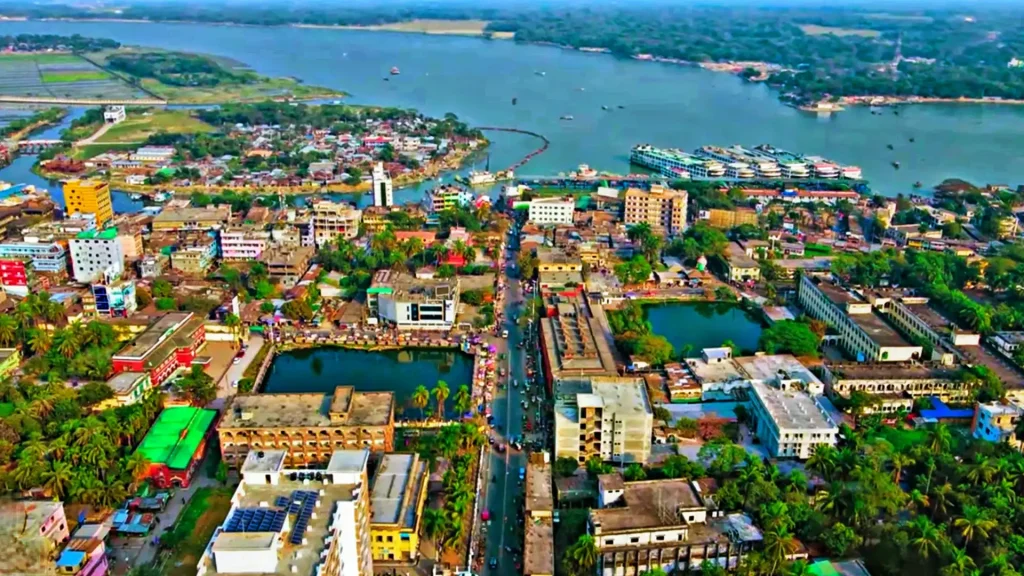
The daily life, culture, and stories of Barishal flow inseparably with its rivers. Photo by: Niamul Mulk
The network of rivers and canals in Barishal is not merely a means of transportation—it is the lifeblood of the region. Stone embankments along the river, bustling ghats, and tranquil urban edges together transform Barishal into more than just a city; they offer an expansive experience of waterborne life. Paddy fields of the farmers, fishing nets of the local fishers, and the daily routines of ordinary people are all nourished by these rivers. To the people of Barishal, the rivers are more than just nature; they are an inseparable part of their way of life, their livelihood, and their identity.
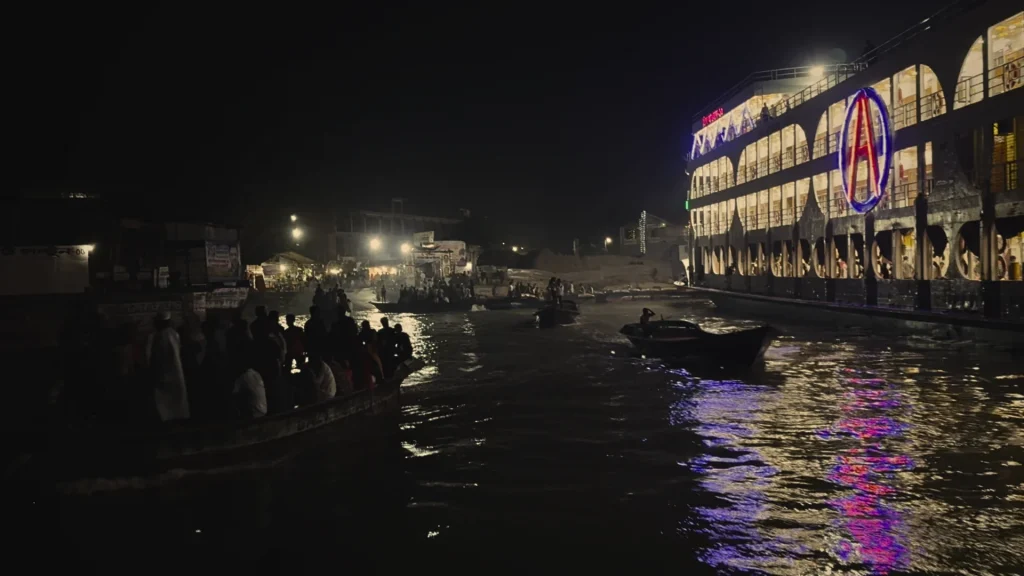
The network of rivers and canals in Barishal is not just a means of transport; it is the lifeblood of the city. Photo by: Md Mahamudul Hasan
The rivers do more than shape the city’s daily life—they infuse Barishal’s culture with a unique dimension. The melancholic Bhatiyali songs of the boatmen, drifting across the waters as symbols of love; the festive boat races that awaken the city’s pulse; and the lively riverside gatherings of the locals—all form the very soul of Barishal. Every ferry crossing is more than a journey from one bank to another; it is a witness to centuries of human-river connection, a living expression of cultural heritage. This heritage is the pride of the people of Barishal, the bearer of their distinctive identity.
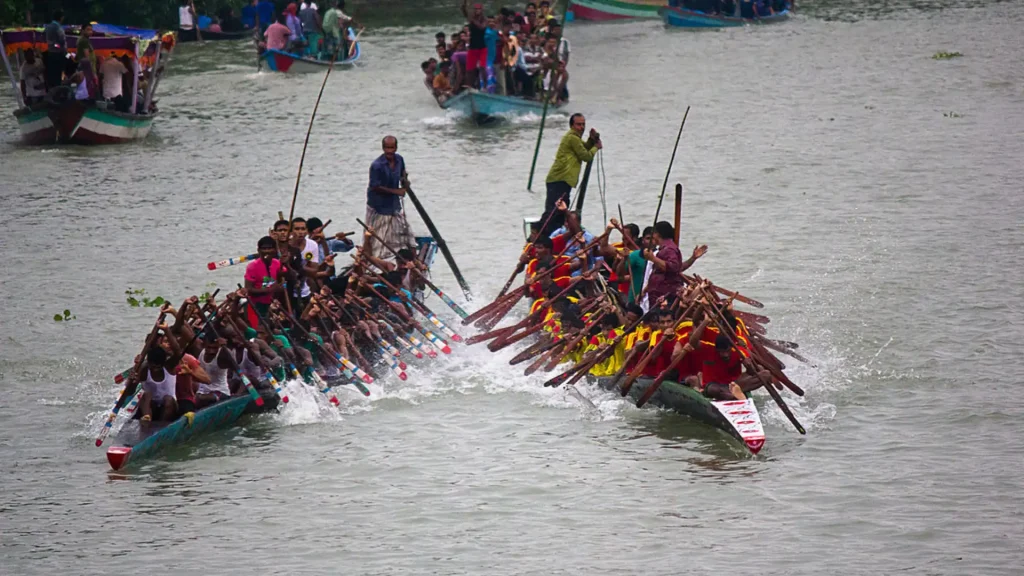
The excitement of a boat race on Barishal’s Kirtonkhola River, where every pulse tells the story of the city’s riverine life and culture. Photo: Collected
Alongside its rivers and culture, Barishal’s culinary heritage is another captivating aspect. Ilish, Bangladesh’s national fish, is unparalleled in taste and appearance. The Ilish from rivers like Payra, Bishkhali, Tetulia, and Meghna has earned global fame for its exceptional flavor. From mustard Ilish to panta Ilish and fried Ilish, every dish carries the distinctive essence of the river’s waters. Beyond Ilish, Barishal offers a variety of traditional delicacies: Biskhi or sweet rice made by cooking rice with coconut and jaggery; Pakon pitha, indispensable at weddings and ceremonies; and Malida, a special beverage for Iftar during Ramadan, cherished by locals. In winter, date syrup chhushi pitha is a favorite treat. The use of freshly grated coconut in certain dishes is a hallmark of the region, enriching the flavors manifold.

Barishal’s Ilish, Bangladesh’s national fish, an enduring symbol of riverine life. Photo: Collected
Just like its rivers, Barishal’s hospitality flows naturally—felt in every smiling face and the warmth extended to every newcomer. Whether at a small riverside ghat, a rural home, or a bustling market, the openness of its people is evident in every corner. The gentle rhythm of conversation, the chatter over tea, and the riverside tales create an intimate connection. This hospitality is more than mere courtesy; it is a part of Barishal’s soul—a living drama of rivers and people intertwined, drawing every visitor into the city’s heart.
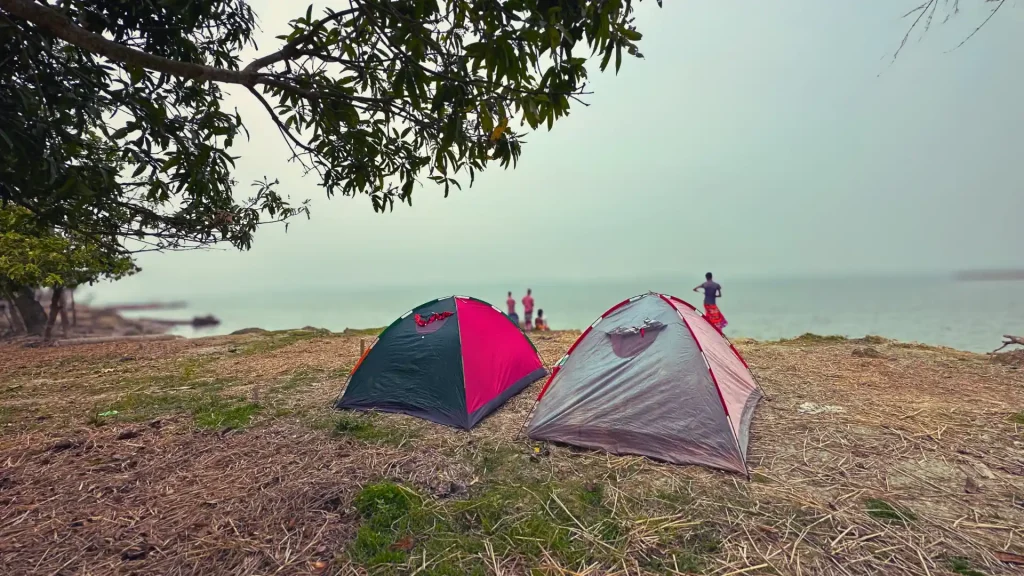
The people of Barishal are warm and hospitable. Just like the rivers, their hospitality is simple and vibrant. Photo by: Md Mahamudul Hasan
Today, Barishal is not just a city of history; it is emerging as a vibrant hub for future tourism. Thanks to the Padma Bridge, the distance between Dhaka and Barishal has shortened, making travel easier and more comfortable. Modern buses can reach Barishal from Dhaka in just three and a half hours, complemented by luxury launch and flight services. To blend tradition with modernity in river travel, a long-dormant initiative to restart paddle steamers has been launched, promising a memorable journey along the Dhaka-Barishal river route.

The paddle steamer soon to be launched on the Dhaka-Barishal river route, creating a new link between tradition and travel. Photo: Collected
Barishal’s immense beauty is hidden in every bend of its rivers and canals. Morning mist rises from the waters like smoke, while the rhythmic splash of oars breaks the stillness of dawn. Rows of green trees on either side mirror themselves in the water, as small boats carrying vegetables, fruits, and daily necessities drift slowly through the center. In the floating markets of Bhimruli, Atghar, and Kuriana, piles of guava, hog plum, vegetables, and local fruits are not just for sale—they form a living watercolor of rural life.
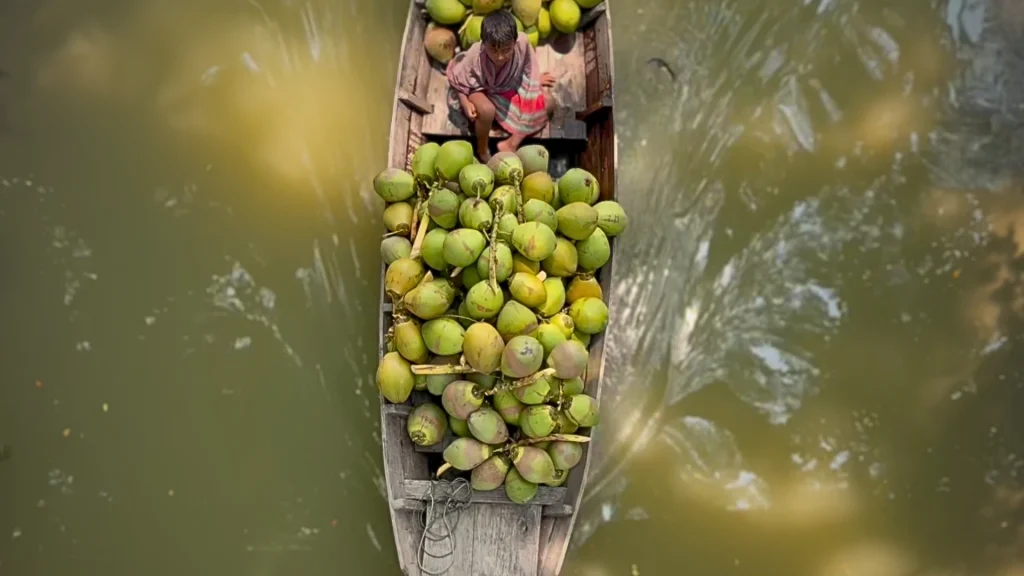
A boat carrying fresh coconuts on Barishal’s canal, symbolizing local riverine life and culture. Photo by: Md Mahamudul Hasan
Satla Beel, located in Uzirpur Upazila of Barishal District, is blanketed with a sea of red lotuses, like a dreamlike canvas painted by nature. From the monsoon to the early part of autumn, waves of red, white, and purple lotuses ripple across the bill, while the soft morning mist, the rhythmic splash of oars, and the chatter of people together fill Barishal’s riverine life with an extraordinary experience.
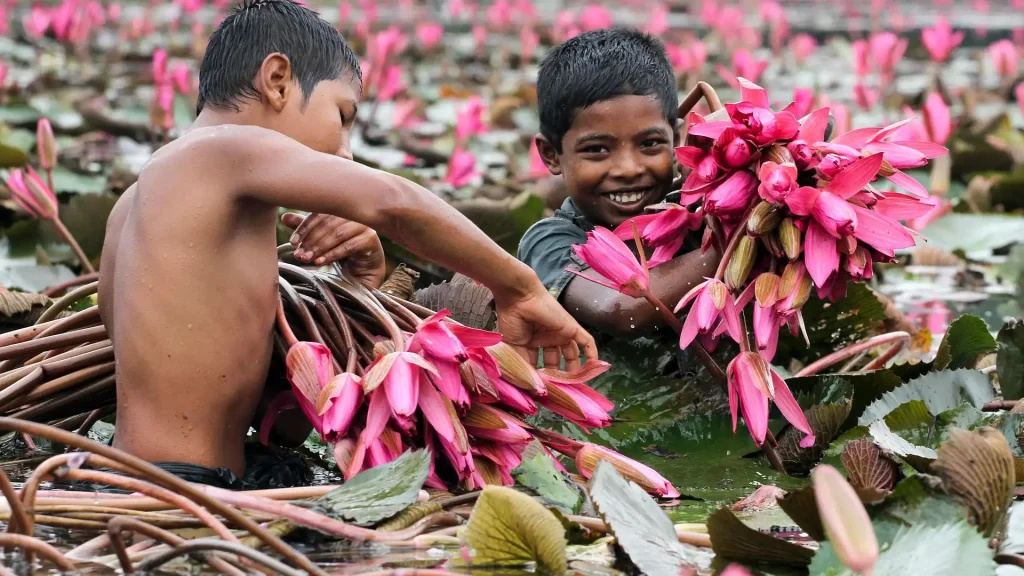
Two children among the red lotuses of Satla Beel, reflecting Barishal’s riverine life and joy. Photo: Collected
Barishal is more than just the name of a city; it is a way of life flowing across the rivers, a living poem in motion. Traveling here is not merely about visiting a new place—it is about immersing oneself in the morning mist, the rhythmic splash of oars in the canals, and the riverine smiles that grace the faces of the locals. Every boat, every wave, and every ripple seems to tell its own story in Barishal’s unique language. This experience reveals why Barishal is called the “Venice of the East”—a living watercolor poem, where nature and humanity intertwine to weave an endless, vibrant tale of beauty.